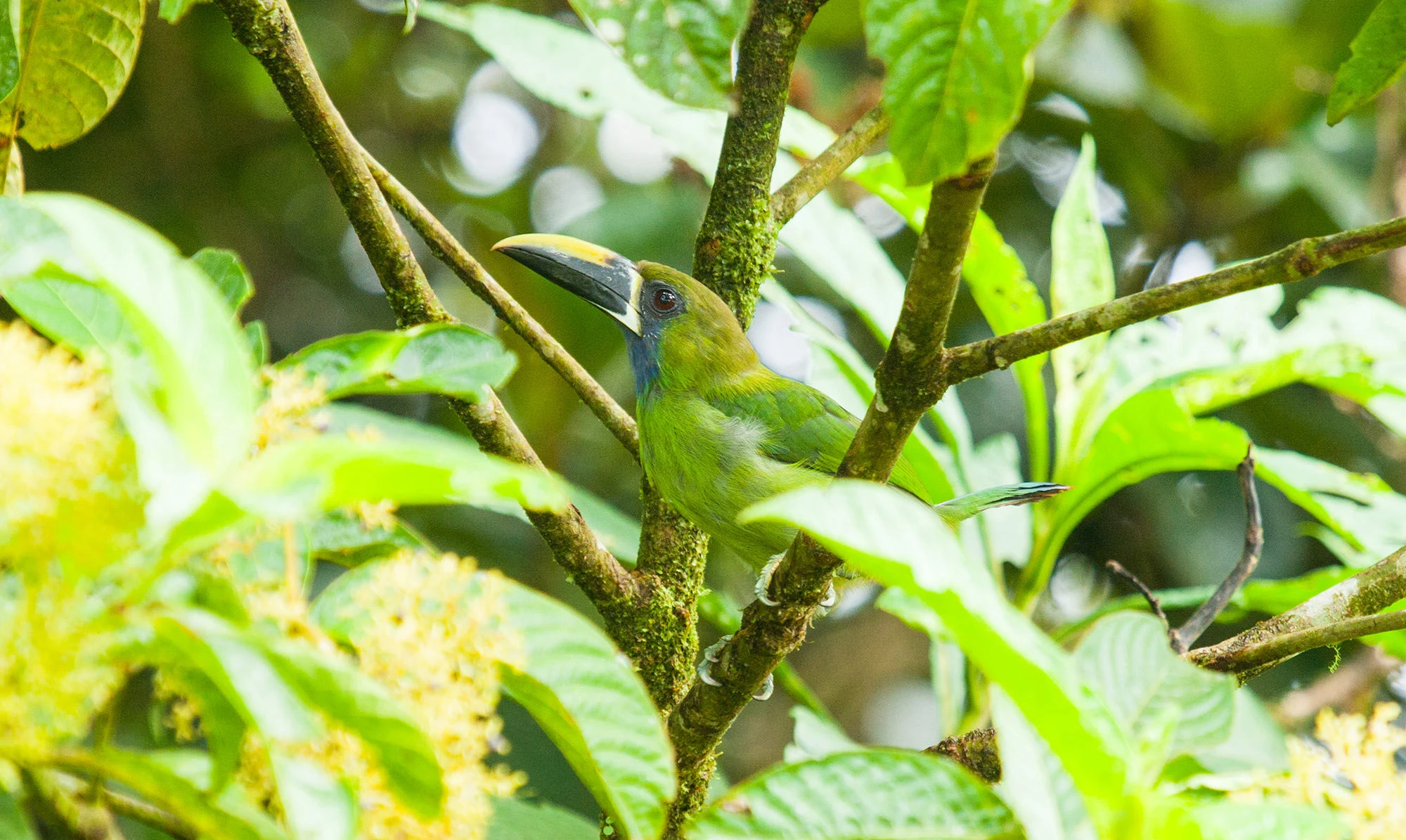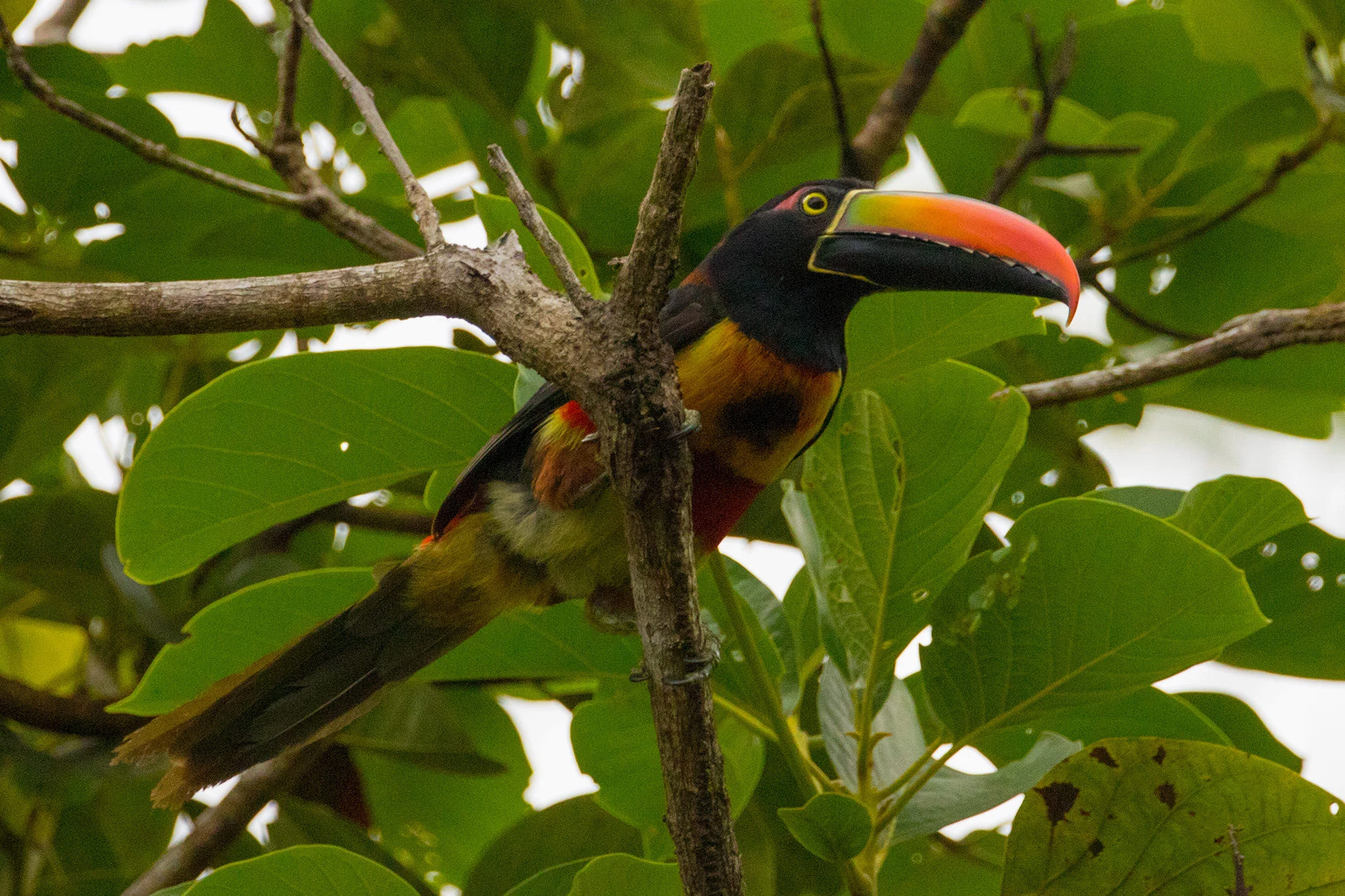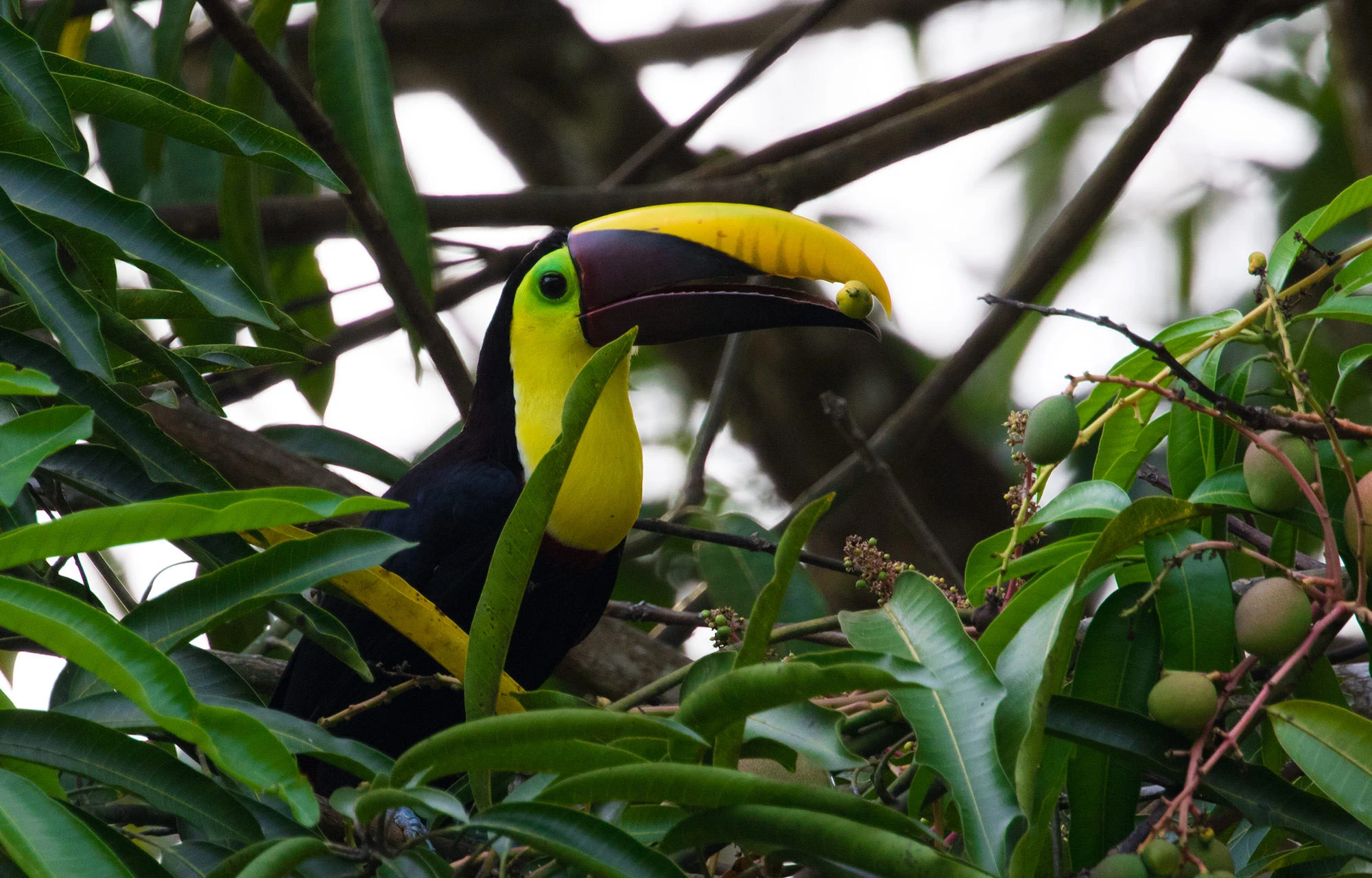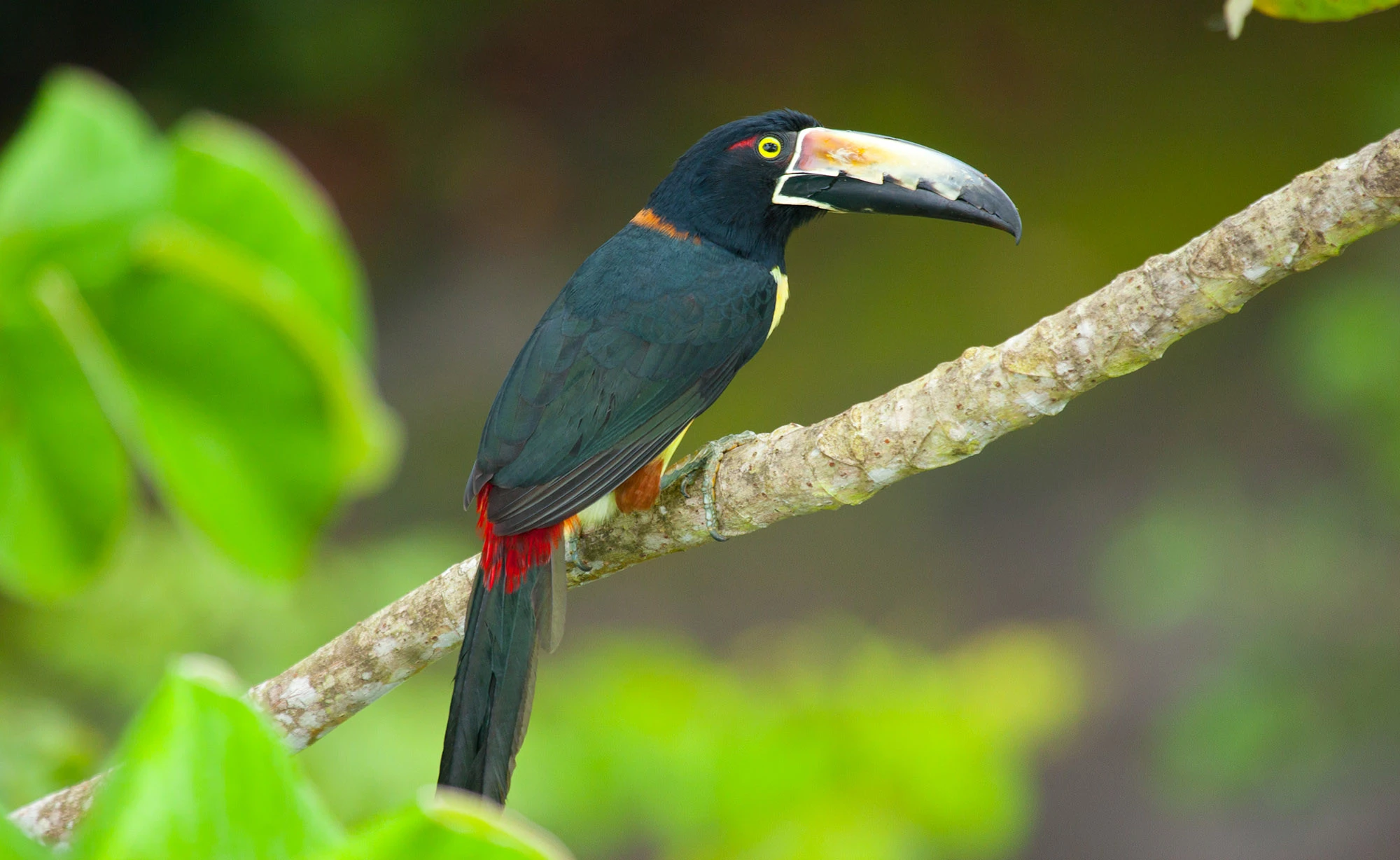Toucans, Toucanets and Aracaris
Brilliant bills and emerald feathers reveal the tangled family tree of Ramphastidae.

I love toucans, but there is something unreal about the Emerald Toucanet. Toucans are always brilliantly colored, but the emerald toucanet is a brilliant green - such an ethereal color for such a large bird.
The emerald toucanet above, which I photographed in Panama while with a group of birders, is also called a Blue-throated Toucanet. Look at its throat. If you would see the same species in Mexico, for example, you wouldn't see the blue throat.
Blue-throated toucanets, then, are a subspecies of Emerald Toucanets. But, ornithologists currently recognize seven different, and distinct, subspecies of the Emerald Toucanet, and they all have great names in their own right - our Blue-throated, the Wagler's, the Emerald subspecies, the Violet-throated, the Santa Marta, the Andean and the Peruvian.
While I love toucans, this guy in particular is a good lesson in the future of ornithology. Right now, science recognizes about 10,000 species of birds. But as we learn more about biology, DNA and genetics, we get a better glimpse into whether certain animals should be categorized as sub-species, or their own species.
Many believe that within the next quarter-century, the amount of bird species known to science will jump from ten thousand to perhaps as high as 25,000. The reason has nothing to do with more discoveries - although new bird discoveries still do happen. It's about more refined biology being used to reclassify birds.
For the birder's who are walking with me, seeing this Blue-throated Toucanet could end up having a profound impact on their hobby in the future. Let's say they've seen the Emerald Toucanet in Peru, Venezuala, Costa Rica, Mexico and now Panama. If biologists decided to split the bird into seven species, these birder's total species tally will increase.
In ornithology, there is a reverse side to 'splitting.' It's called 'lumping.' In taxonomy, there are lumpers and splitters; and both sides have valid arguments about whether certain species need to be split, or certain species need to be reclassified as a single species. In the world of ornithology, both are happening constantly, and following the conversation is a nice way of peering into the future of taxonomy.
Fiery-billed Aracari
The Fiery-billed Aracari is a brilliantly marked toucan of Costa Rica and western Panama, named for its flame-colored bill. Found in lowland forests, it often travels in small, noisy flocks as it feeds on fruit and insects.

Black-mandibled Toucan
Also called the Chestnut-mandibled Toucan, this is one of the largest toucans in Central America. Its loud yelping calls echo through humid forests where it feeds mainly on fruit, but also takes small prey.

Chestnut-eared Aracari
This small aracari is recognized by its chestnut-colored ear patch and multicolored bill. Widely distributed in South America, it is a social species often seen in groups moving noisily through the canopy.

Collared Aracari
The Collared Aracari is a slender, colorful member of the toucan family with a striking yellow belly crossed by a red band. It is common in Central American forests, where it travels in small flocks and roosts communally in tree cavities.

Emerald Toucanet
The Emerald Toucanet is a small but dazzling member of the toucan family, shimmering in shades of green that blend perfectly into the forest canopy. Its many subspecies, like the Blue-throated form, make it a fascinating example of ornithology's ongoing debates about splitting and lumping species.

